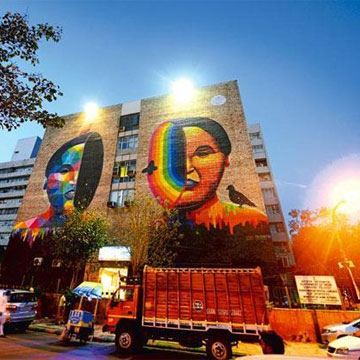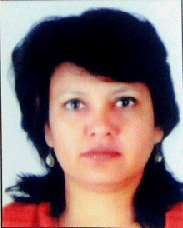 New Delhi:
New Delhi: They hail from varied backgrounds - one born with a kind of silver spoon and the other not so fortunate. What they have in common is their passion for live-sketching; it is something they'll never give up as it gives them the freedom to live life to the full.
"If I apply for a job now I can easily get a job of Rs 30,000-35,000. But I am already earning more than that working like this. I am my own master," Vimal, who generally plies his trade from a pavement in the Connaught Place (CP) central business district, told IANS.
Kalyan, 43, who operates from the other end of the pavement, concurred. "I remember the time when I would carry a big table and four chairs to the top floor of a mall every week for the artists when a flea market would be set up there, only to be reviled in return as an orderly. That was in the past. I love this freedom now in my life as an artist. I won't go back to working for others," he said.
"My parents never understood me," said Vimal, who hails from Dhanaura in Amroha district, Uttar Pradesh. "Being an Agarwal, I was always expected to man a shop, like my father did, and like his father did."
But Vimal had other plans, having been bitten by the art bug when he was just 10. He would draw portraits of his teachers and do the art homework of his peers. He sustained his interest for a decade and then he got what he likes to call his first "break".
"I met J.P. Sharma when I was 20. He was an artist in Delhi and was visiting our town. As it happened, one day he visited the fair in the town and liked a painting on display in one of the shops. He asked to meet its painter. I was brought before him, and soon was under his tutelage," Vimal said.
But Sharma wasn't looking so much for a disciple than an errand boy. "He would never let me touch his tools. Whatever I have learnt is through watching him paint. At times, I would even bring him whiskey to get him to say anything; no lesson could be too trivial," Vimal added.
Later, when he felt that the rigours of a communitarian life were weighing too much on him, Vimal left for the sedate atmosphere of Kullu and stayed there for four years. He frequently visited the , during his stay. But his plans of becoming a professional artist were cut short when he was forced to return home and get married.
"I don't regret my family life; but they don't understand what is art. A man has to completely efface himself to become an artist. I don't consider myself anywhere near the major artists and often feel humbled whenever faced with a superior one," he said.
On his part, Kalyan does not come from a well-to-do family like Vimal, and carried a wiper, instead of a brush, for the better part of his life.
"I worked as a housekeeping boy for many years in a mall (Select City Walk, Saket), and at one point as a daily wage labourer too when it was still being built," Kalyan said, as he deftly drew a live sketch of a youth.
"I had interest in art as a kid, but the hardships of life were too much to pursue such fancies. I again got interested in it when I saw an artist working in the mall. After that I would keep a small diary with me and would keep on drawing things around me sitting on the washroom floor," he said.
Kalyan had his share of rebukes even when he began as a professional artist when policemen would throw his wares.
"I used to be harassed by cops a lot, but my favourite haunt still remains the Old Fort, other than CP. I can get a permanent job anywhere or work on contracts, but I love my freedom and won't lose it at any cost. No more serving others" Kalyan maintained.
Interestingly, Kalyan and Vimal are not long-time buddies who started together as young artists. Instead, it was pure luck that brought them together. They met each other only two-and-a-half years back in CP and since then they've been vagabonds-in-arms and often set up their art shops side by side.
The portrait was done, and with it both the middle-aged craftsmen excused themselves and left for their evening soiree, quite content but also hopeful of brighter days ahead.
 New Delhi: They hail from varied backgrounds - one born with a kind of silver spoon and the other not so fortunate. What they have in common is their passion for live-sketching; it is something they'll never give up as it gives them the freedom to live life to the full.
New Delhi: They hail from varied backgrounds - one born with a kind of silver spoon and the other not so fortunate. What they have in common is their passion for live-sketching; it is something they'll never give up as it gives them the freedom to live life to the full.